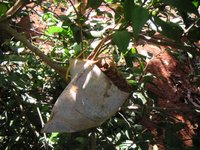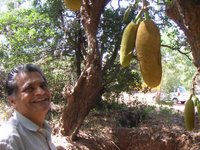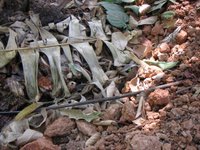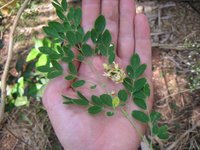
This was the banana circle as we left it on January 25 2006. I see the old fellow has gotten on board with the mulching concept (at first he was somewhat sceptical). Check back this time next year to see what happened!
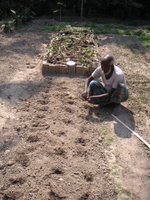
And here is where we left the mulch experiment, again taken 25/1/06. We put brick edges and sunken paths around half of one of the existing vegetable beds. We then added water, a layer of newspaper, a layer of food scraps and azolla, and then a thick layer of water hyacynth (walking on it to fit more in). Then made holes through the mulch, filled them with some compost (which was apparently from food scraps and cow manure but was very old and dry), and then planted in some Eden Early Gem Sweet Corn seeds. We planted the same seeds covered with the same compost in the rest of the bed so we get a direct comparison of any benefit that the mulch gives us.

These pics are as far as we got with the chook tractor based mandala garden. The frame is complete, from bamboo strips drilled and wired together then braced with wire ah la Linda Woodrow. Base diameter is 3.4 meters. Bhaskar has chicken wire netting to cover the whole dome and has started putting it on. He is also researching chickens and hopes to have them at work by the end of February.
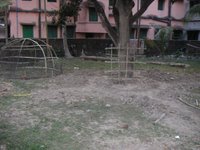
We have marked out and dug out the paths for the whole mandala, and Bhaskar is planning to get sawdust for the paths, to plant lemon grass around the perimeter, and to get various legumes growing where ever they will fit. Again, check back in a year to see what happened!

Finally, here is a chilli, corriander, and flower spiral we knocked up just before leaving. Bhaskar (God bless him!) is going to plant it out. Dan only had time to plant one nasturtium seedling right at the base...






